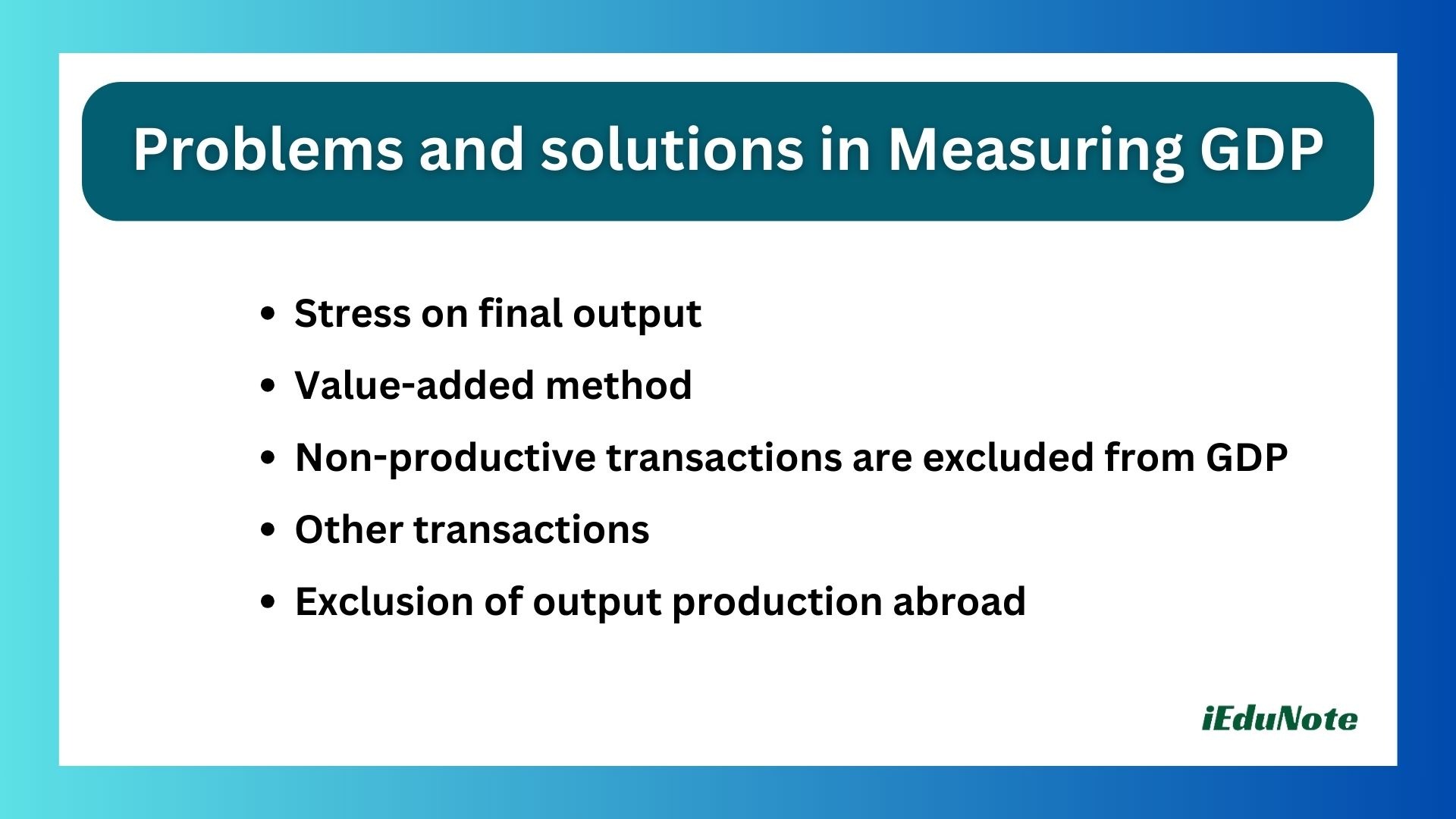It is a key concept in national income. “Gross domestic product (GDP) is the total market value at current prices of all final goods and services produced within a year by the factors of production located within a country”.
The labor and capital of a country working on its natural resources produce a certain aggregate of commodities such as material and non-material goods every year.
In addition to this, there may be foreign firms producing goods in various sectors of the economy like mining, electricity, manufacturing, etc.
If we add up the money value of all the final goods produced both by domestic and foreign-owned factors annually in the country and value them at market prices, it will be called gross domestic product (GDP).
Gross Domestic Product thus is the value of the aggregate or total production of goods and services in a country in one year.
If we make a detailed list of all such commodities produced annually or measure the total goods produced during a year by weight or by volume, it will not give us any clear and concise impression about our total national output.
So what is generally done is that the monetary value of all final goods and services produced during a year at current market prices is added up. This total current market value of all final goods and services produced in an economy in one year period is called gross domestic product (GDP).
In the words of Campbell: “Gross Domestic Product is defined as the total value of all final goods and services produced in a country in one year“. According to Shapiro: “GDP is defined as a flow variable, measuring the number of final goods and services produced during a year“.
The formula for GDP: GDP = GNP – Net Foreign Income from Abroad/ Net foreign earnings
Problems and solutions in Measuring GDP

The main problems or pitfalls that are to be avoided in the measurement of GDP are as follows:
(i) Stress on final output
While calculating the gross domestic product (GDP), the value of only those goods that have reached their final stage of production and are available for consumption. The primary or intermediate goods are not counted in GDP.
For example, a table made of wood is the final product. The wood used in making the table is a primary good. While calculating GDP, if we include the value of wood as a separate item and the value of the table separately, it will be a case of double counting and this leads to an inflated rise in GDP.
(ii) Value-added method
Another way to avoid the problem of double or multiple counting is to calculate only the added value of a particular commodity at every stage of production. The results in both cases will be the same.
Suppose the price of the book which you are reading is 10$. This includes the cost of paper, printing, and binding charges, etc. While estimating the gross domestic product, there are two ways open to you.
Either you include the final price of the book at one time in gross domestic product or you add up the added value at every stage in the process of the production of the book. But you are not to count the value of a thing more than once.
From the following example, the reader can easily understand how the danger of double or multiple counting can be avoided.
| Stage of Production | Form of the Product | Price at Each Stage | Value Added at Each Process |
| 1st | Jungle Wood | 0.25 | 0.25 |
| 2nd | The price of wood after transporting to the city | 0.38 | 0.13 |
| 3rd | Paper manufacturing | 2.00 | 1.62 |
| 4th | Printing of book | 5.00 | 3.00 |
| 5th | Binding and title, etc. | 6.00 | 1.00 |
| 6th | Sale price | 10.00 | 4.00 |
| 10.00$ |
From the above example, it is clear that if we add up the price of the product at every stage of production, the total price of the book comes to 23.63$, while it is priced at 10$ only.
So we conclude that while adding the value of the book to the gross national product, we should either include the final price of the book which is 10$ or we should add up the added value at each stage in the process of production.
But we are not to count the value of a particular commodity more than once. If we do so, the gross product will be overestimated. The computation of GDP by this method is not popular.
(iii) Non-productive transactions are excluded from GDP
To measure the economic well-being of a society in a year, the non-productive transactions are excluded from the Gross Domestic Product. There is one major type of non-productive transaction, namely – Purely financial transactions. Under purely financial transactions
- 1. all public transfer payments that do not add to the current flow of goods such as social security payments, relief payments, and
- 2. all private financial transactions such as the receipt of money by a student from his father which do not contribute to current production are all excluded from GDP.
(iv) Other transactions
There are a few other transactions that are not included in GDP. For example, people work in their own houses without any payment. For example, a housewife takes care of the house and children. Since she is not paid, Therefore,, the value added by her is not included in GDP.
(v) Exclusion of output production abroad
GDP is the value of output produced by factors of production located within a country. It excludes the output produced abroad by domestically owned factors of production.